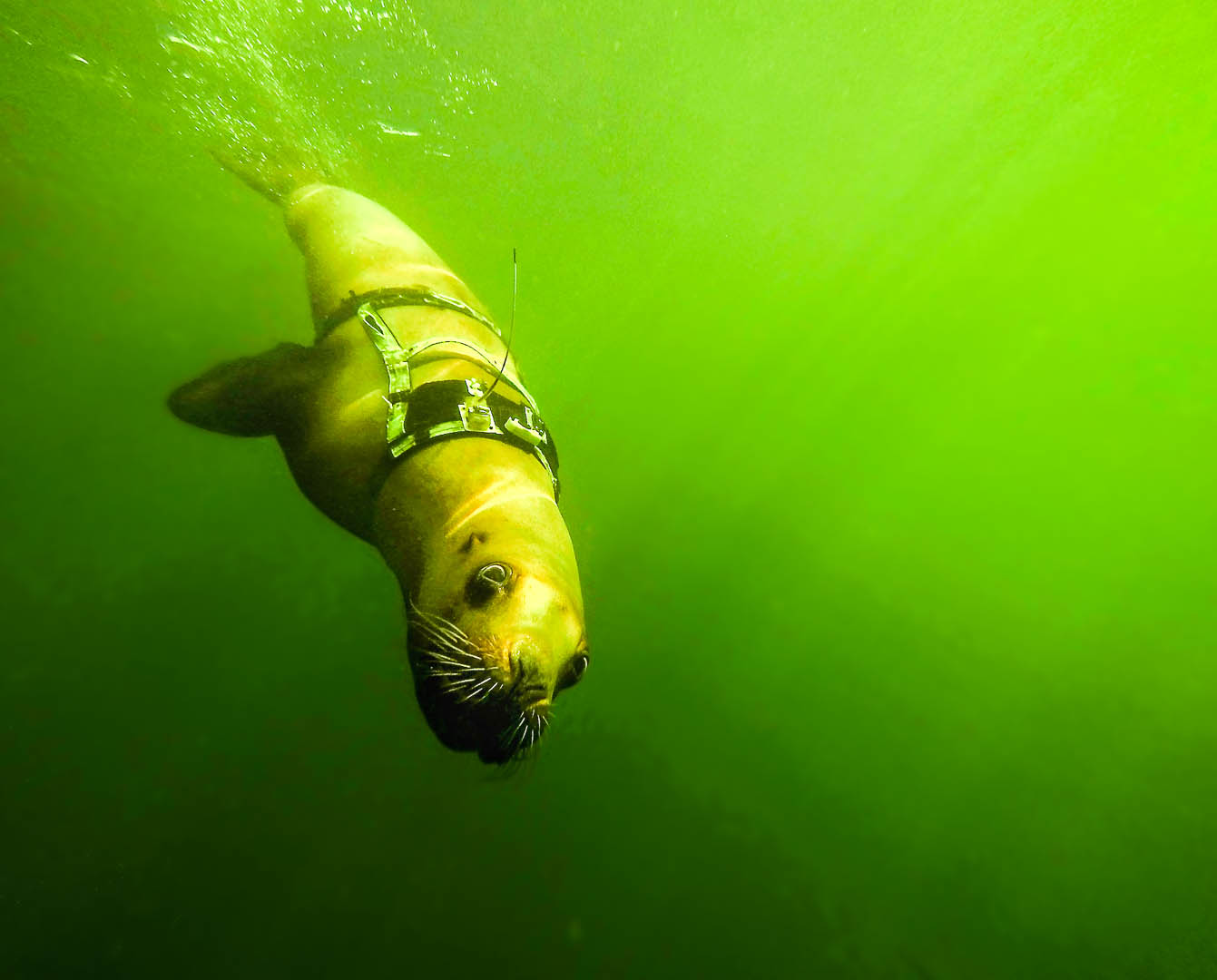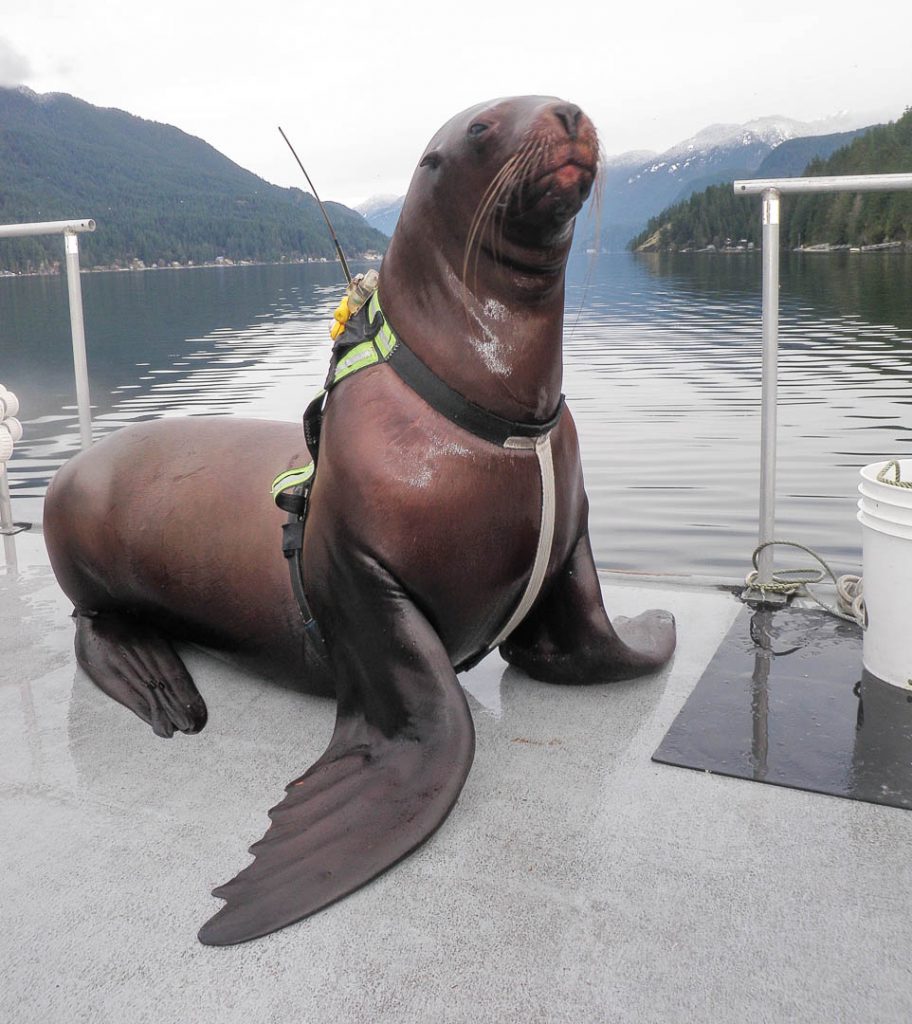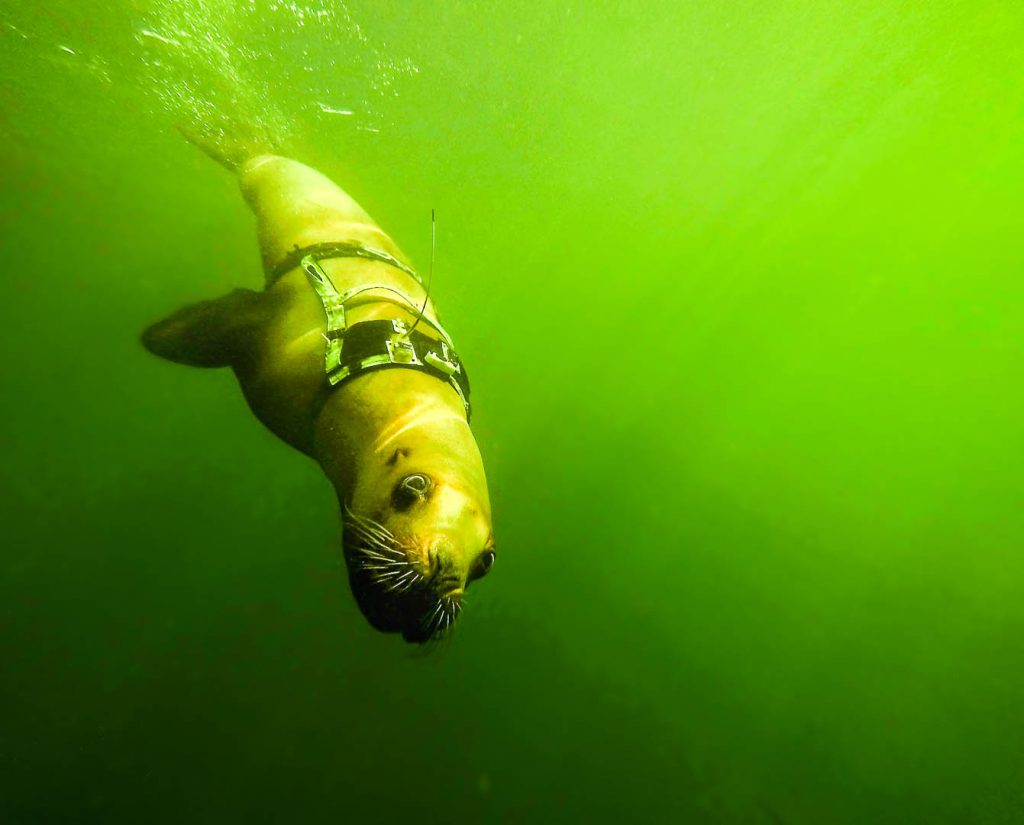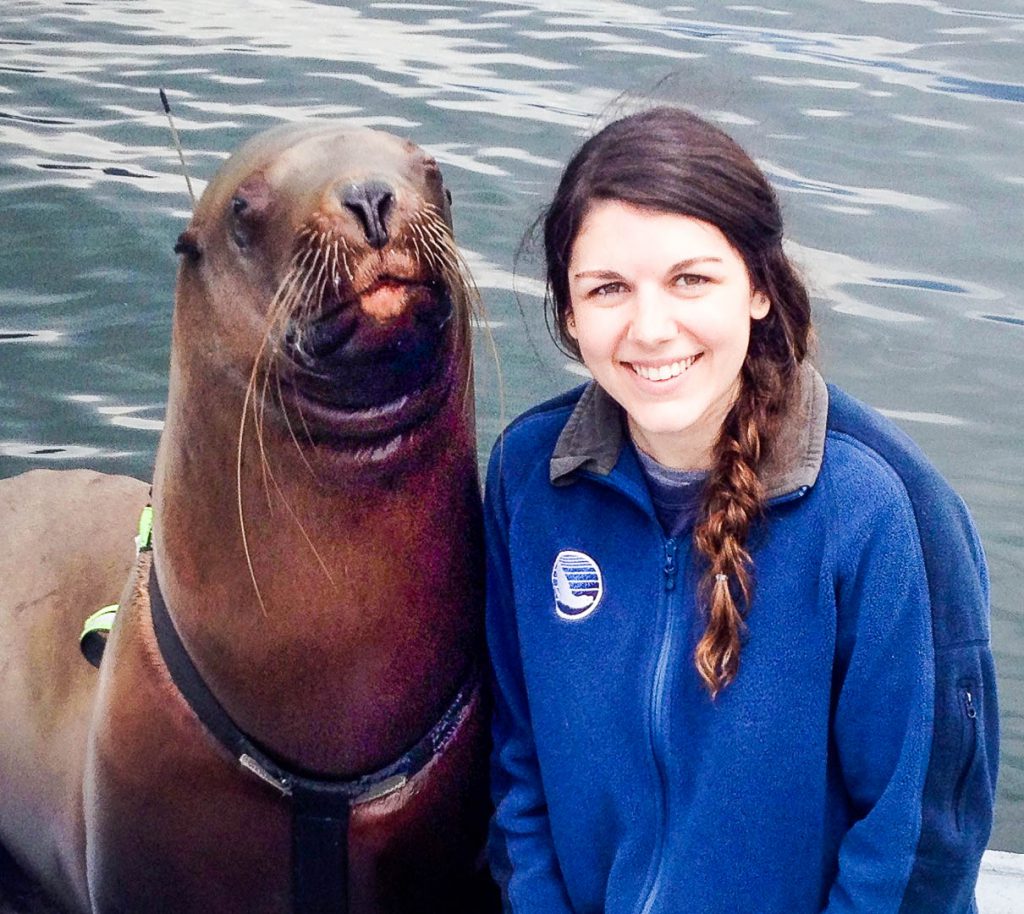

Sitka, one of 4 Steller sea lions trained to wear a harness carrying scientific instruments while swimming and diving in Indian Arm – a steep-sided glacial fjord near the Open Water Research Station.
In a quiet fjord near the city of Vancouver, a dedicated group of scientists and trainers are making waves in the scientific community. Since 2003, researchers at the Open Water Research Station have studied a small group of trained Steller sea lions in an open ocean environment. It is the first facility in the world to provide scientists with an in-depth understanding of how Steller sea lions behave in the wild by conducting controlled experiments with sea lions under human care.
Elizabeth Goundie (The University of British Columbia) recently conducted research at the Open Water Research Station to study what factors influence the foraging behavior of Steller sea lions for her Master’s thesis. Her study of foraging efficiency across varying levels of prey abundance was published in the Journal of Experimental Marine Biology and Ecology.
“Steller sea lion populations in western Alaska have declined by over 80% since the 1970’s, and we’re not sure why,” Goundie says. “A number of people have speculated that fisheries reduced the biomass of prey available to sea lions, and I wanted to investigate what changes should have been observed in sea lion foraging behavior if sea lions encountered reduced prey abundance.”
Prey Patch
While past studies at the Station have focused on measuring the energy expended during foraging, Goundie measured both the energy expended and the energy gained by sea lions—a cost-benefit analysis, if you like. She also looked at how changes in sea lion behavior due to changes in prey availability affected both sides of the equation (i.e., foraging efficiency). To do this, she created different artificial ‘prey patches’—large clusters of fish that wild sea lions would typically feed in.
The sea lions at the Open Water Research Station are trained to dive to varying depths, where they are rewarded with chunks of herring fed through a long tube that descends 10 or 40 m (33 – 130 ft) from the surface. From the surface, Goundie simulated high- and low-density prey patches by delivering either a generous portion of herring or a conservative serving.
“When the ‘prey’ were less abundant, the sea lions gave up earlier on their dives,” Goundie says, “and that produced a lower foraging efficiency—greater effort for less reward. Because they weren’t foraging for very long, they spent more of the dive doing ‘unprofitable’ things that cost energy, such as transiting to and from the feeding tube, and spending more time at the surface recovering from the dives. All of that spent energy was not replaced because they gave up earlier on the ‘profitable’ part of the dive.”

The Steller sea lions dove to the end of PVC pipes 10 or 40 m (33-130 ft) from the surface where they would find either high or low densities of herring to feed upon.
Efficient Fishers
Surprisingly, Goundie found that the relationship between prey availability and foraging efficiency is not constant. Her high-density prey patch, which offered three times more food than the low-density patch, prompted a five-fold increase in foraging efficiency.
Of course, this also means that when the reverse was true—when Goundie simulated prey scarcity—the sea lions foraged five times less efficiently. They effectively experienced double jeopardy by performing proportionally far less effectively in a prey patch that contained less prey to start with. In the wild, she says, this means that sea lions that encounter reduced prey abundance would have difficulty meeting their daily energy requirements, and would show noticeable changes in their body conditions.

Sitka and her star researcher – Elizabeth Goundie.
Goundie says her findings may open the door to more behavioral studies with trained Steller sea lions that test basic scientific theories on “optimal” foraging behavior, and aid in understanding what is happening to sea lions in the wild that may be experiencing changes in their prey base.
“The animals at the Open Water Research Station are excellent representatives of their wild counterparts,” she says. “Working with them allowed us to bring to life some of the excellent theoretical models of sea lion populations. It was an incredible experience to work with such talented trainers, technicians and animals. They took my research ideas and made them into reality.”
 PUBLICATION
PUBLICATION
|

|

 |
||||||||||||
